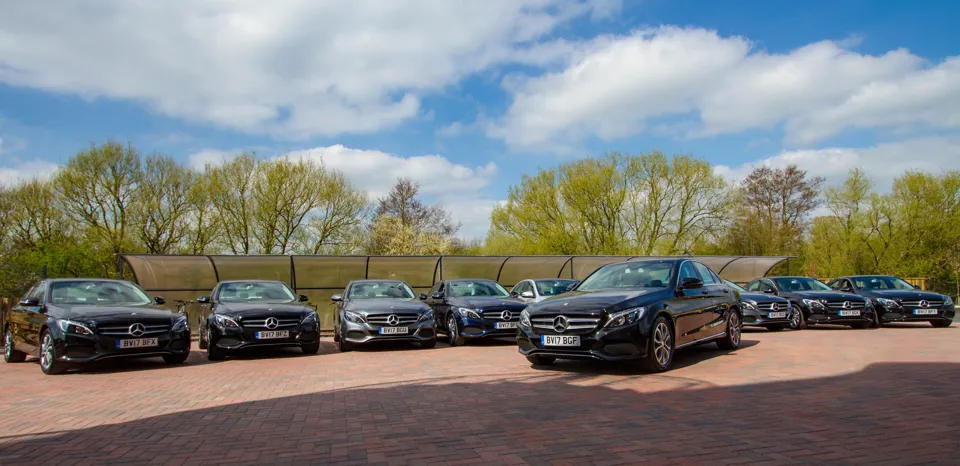Data from ALD Automotive’s plug-in hybrid and ProFleet telematics trials has shown fleets could save £2,000 if they switch from diesel to PHEV.
The results of a trial carried out by ALD Automotive have shown that fleets could replace their standard internal combustion engine (ICE) cars with plug-in hybrids and make substantial savings on wholelife costs.
In the six-month investigation, ALD business drivers swapped petrol and diesel cars for plug-in hybrids. The trial found that drivers of a Mercedes-Benz C220d 2.1 Sport Premium Auto (diesel) could make tax savings of around £6,000 in benefit-in-kind (BIK) by switching to the comparable C350e PHEV.
Running these vehicles for 15,000 miles a year for either three or four years, ALD concluded that businesses could save up to £2,000 for every vehicle replaced by the PHEV version.
Matt Dale, head of consultancy at ALD, said: “We went into this trial with a very open mind and decided from the start there would be no preconceptions, but that it would be a factual review of PHEVs to see how they work. The results in certain cases have surprised us.”
The PHEV fleet managed an overall average of 54.48mpg which rose to 56.44mpg after the first month. The best recorded mpg was 110.54 by a driver averaging 7,000 miles per annum (mpa) resulting in an annual fleet saving of £200.
The highest mileage recorded was 14,000mpa, delivering 84.67mpg and resulting in an annual fuel saving of £500.
Across the final 68,000 miles of the 145,000 miles covered during the trial, more than 50% of journeys were found to be completed in ‘engine off mode’ in which the hybrid’s petrol engine was disengaged.
ALD calculated a total reduction in CO2 emissions of 14.8 tonnes across the PHEV fleet versus the diesel equivalent.
The trial had a mix of high and low mileage drivers, with an even split of perk and job need. However, the higher mileage drivers did not achieve the same fuel economy as the lower mileage ones.
“While the trial has proved that the benefits can outweigh that of diesel and petrol vehicles at certain annual mileages, driver suitability remains key,” said Dale.
“We found that for drivers doing more than 20,000 miles per annum, the fuel cost benefits begin to diminish due to a lower mpg. At lower annual mileages the PHEV’s mpg was considerably higher when compared to the equivalent petrol and diesel model.”
To enhance the results, ALD sampled data randomly pulled from its ProFleet telematics devices amounting to 1,400 days covering a total of 95,000 miles and 2,396 hours of journey time.
The data showed that 77% of daily journeys completed by ALD company car drivers were less than 100 miles a day and 52% were less than 50 miles a day.
Dale said: “More than three-quarters of all journeys in the data we sampled could be completed using purely electric power.
“With range improvements being made with each new model launched, it won’t be long before battery electric vehicles (BEVs) can exceed 200 miles. At that point, 94% of journeys could be completed out of an ICE vehicle.”
Further analysis of the ProFleet data found that, of the days when the total journey distance exceeded 200 miles, a number of them were not actually business trips but were made when company car drivers were on holiday.
“While this analysis shows that BEVs can viably replace the ICE for many journeys, there’s still a perception that it’s a big leap to make. PHEVs, on the other hand, are often seen as a stepping stone towards a fully electric vehicle thanks to the back-up petrol engine,” said Dale.
Despite common perceptions, Dale reported that the ALD test drivers enjoyed the experience with some going above and beyond to reap the benefits.
He said: “I haven’t had a single driver that didn’t enjoy the experience. Drivers had to apply via a survey which was about home charging, usage and mileage, and we were oversubscribed which gave us the option to test both high and low mileage.
“Drivers began to share experiences, and taught each other about regenerative braking. There is a real camaraderie among them – they also have brilliant charging etiquette, and unplug each other’s cars when fully charged!
“We even had one driver change their electricity supplier so they could get the most out of their PHEV which proves that people will go to amazing lengths just to make something work properly.”
Dale warned that simply adding PHEVs to a fleet is not enough and that new policies must be agreed and put in place.
“Policymakers need to ensure drivers understand that if they take a PHEV there are expectations. The fleets that switch have got to want to switch and buy into it, it can’t just be for the tax benefits,” he said.
“We understand that drivers are happy to take a PHEV for BIK – but if the business wants to really benefit then there needs to be a flexible policy in place.”
Since the trial began, ALD’s PHEV fleet has grown to 35 vehicles from different manufacturers, which Dale hopes will serve for further comparison and analysis in the future.
A white paper based on the trial, and a guide for businesses wanting to switch will be released by ALD in the coming months.
Lee Maher, trial participant testimony
- 9,000 miles per annum
I was very interested in the future of electric vehicles and reducing pollution so taking a PHEV was a sensible choice for me.
I didn’t know much about the experience of driving these types of vehicles and had not driven one previously.
Having read the Elon Musk biography, however, I was aware how quickly electric vehicles were being developed and how this was the equivalent of a space race for manufacturers, each wanting to prove to customers that their proposition was leading.
I found making the switch between an ICE and a PHEV very easy. Learning how to use the car and drive it efficiently was very intuitive and I had excellent support from the Mercedes and ALD support teams.
I got into the habit of using the dashboard and feeling the momentum of the car to drive in a more efficient manner. I very quickly began to change my driving style, particularly on motorways.
I also lifted my foot off the accelerator more often to conserve battery.
I opted to have a home charger installed which meant that charging the car was very easy. It was also a topic of conversation for my neighbours who were all very interested in what is still a relatively novel concept for many.
Using the charge points to top up the car while at work was also very simple and convenient.
The biggest challenge for me operating a PHEV has been the electric charging infrastructure. Finding a free charging bay at the office wasn’t always straightforward and sometimes took a bit of coordination!
As more people choose electric vehicles the charging infrastructure will need to keep up. The only other problem was not hearing the engine when you pressed the ignition button!
I would definitely choose a PHEV for my next company car and have already requested another. There is still much debate around the burning of fossil fuels to generate power for electric vehicles, but I am excited about the future of the technology.
There was one day in the summer during the trial that the UK electricity supply from renewable sources exceeded 50%. This is what makes electric vehicles a compelling proposition; just imagine if you could drive to work on renewable energy powered by the sun, waves and wind?
My advice for those considering a PHEV for their next company car would be to look at the bigger picture; using a PHEV is a step in the right direction for anyone looking to do their bit for the environment.
If you have a commute of up to 20 miles each way with a charger at each end, they really work.



















john4870 - 12/03/2018 11:19
Having used Toyota Prius hybrids (and now a plug-in Prius hybrid) for 10 years I wholeheartedly support this article. Taking into account the BIK savings and fuel savings compared with what I would have been driving, using hybrids has been worth well over £35,000 in my pocket, plus of course the environmental benefits. I'm convinced that if more folk understood hybrids they would almost all be using them - the greatest challenge is fear of the unknown.